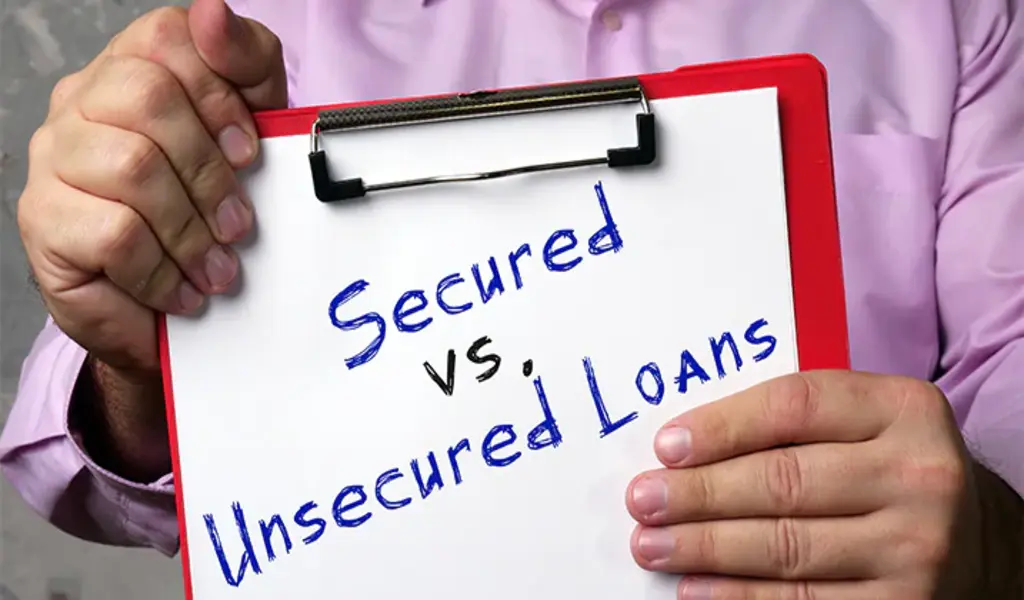Legal
The Differences Between Secured and Unsecured Debt

In today’s financial world, it’s common to hear terms like secured and unsecured debt. Understanding the differences between these two types of debt can help you make informed decisions about borrowing money and managing your finances.
At a high level, secured loans require that you offer up something you own of value as collateral in case you can’t pay back your loan, whereas unsecured loans allow you borrow the money outright after the lender considers your financials.
One example of an unsecured loan is a personal loan for debt consolidation for bad credit, which can help individuals manage and consolidate their existing debts.
Secured Debt: The Basics
Secured debt is a type of loan that requires you to provide collateral to the lender. This collateral can be any valuable asset, such as your home, car, or valuable personal items.
The lender holds a lien on this collateral, which gives them the legal right to seize and sell the asset if you default on the loan.
Advantages of Secured Debt
There are several benefits to opting for secured debt, including:
- Lower interest rates: Since the lender has collateral to fall back on, they generally offer lower interest rates compared to unsecured loans. This can save you money over the life of the loan.
- Higher borrowing limits: Secured loans often allow you to borrow more money than unsecured loans. This can be especially helpful for large purchases, such as a home or car.
- Easier approval: If you have a less-than-stellar financial history, offering collateral can improve your chances of getting approved for a loan.
Disadvantages of Secured Debt
Secured debt also comes with a few potential drawbacks, such as:
- Risk of losing your asset: If you default on a secured loan, the lender has the right to seize and sell your collateral to recover their losses.
- Longer application process: Applying for a secured loan can be more time-consuming, as the lender will need to evaluate the value of your collateral and complete other necessary paperwork.
Unsecured Debt: The Basics
Unsecured debt, on the other hand, does not require collateral. Instead, the lender relies on your financial history, income, and other factors to determine your creditworthiness. Examples of unsecured debt include credit cards, student loans, and personal loans.
Advantages of Unsecured Debt
Unsecured debt offers some benefits, such as:
- No risk to your assets: Since there’s no collateral involved, you won’t lose your assets if you default on the loan.
- Faster application process: Applying for an unsecured loan is generally quicker than applying for a secured loan, as there’s no need to evaluate collateral.
- Flexibility: Unsecured loans can be used for various purposes, including debt consolidation, home improvement projects, or other personal expenses.
Disadvantages of Unsecured Debt
Unsecured debt also has its disadvantages, including:
- Higher interest rates: Due to the increased risk for the lender, unsecured loans often come with higher interest rates compared to secured loans.
- Lower borrowing limits: You may not be able to borrow as much money with an unsecured loan compared to a secured loan.
- Stricter approval criteria: Since there’s no collateral to back up the loan, lenders may be more selective in approving unsecured loans, especially if your financial history is less than ideal.
Choosing the Right Type of Debt for Your Needs
When deciding between secured and unsecured debt, it’s essential to consider your financial situation and the purpose of the loan. If you need to borrow a large sum of money, such as for a home or car purchase, a secured loan may be the better option.
However, if you need to borrow a smaller amount of money for personal expenses or debt consolidation, an unsecured loan may be more appropriate.
It’s also important to consider the interest rates and repayment terms of each type of loan. Although secured loans generally offer lower interest rates, if you default on the loan, you may lose your collateral.
On the other hand, unsecured loans may come with higher interest rates, but you won’t risk losing your assets if you can’t make your payments.
Ultimately, the decision between secured and unsecured debt comes down to your personal financial situation and needs. It’s essential to do your research and carefully consider the pros and cons of each option before making a decision.
Related CTN News:
Kolkata FF Fatafat Result Today 2023 – 09/05/23 – TUESDAY
When To Harvest Cannabis: Best Time Of Day To Harvest & Mistakes To Avoid
How To Become An Actuary: Education Requirements, Exams, And More



























